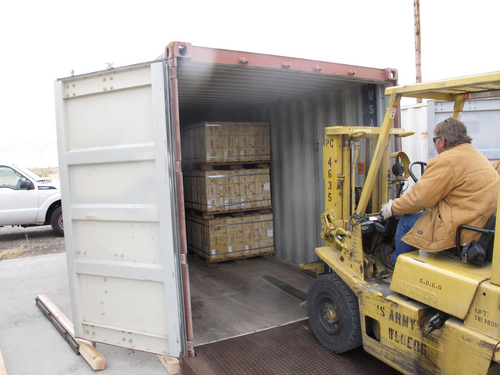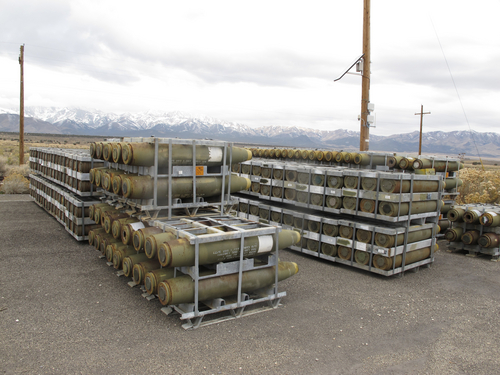This is an archived article that was published on sltrib.com in 2014, and information in the article may be outdated. It is provided only for personal research purposes and may not be reprinted.
The depots responsible for storing the U.S. military's ammunition, including the Tooele Army Depot, have incompatible computer systems and other problems that prevent ammo from being tracked and shared, according to a report.
In some cases, the accounting problems lead to ammunition being needlessly destroyed, says the report released last week from the Government Accountability Office.
But, according to the GAO report, some of that ammo — from .45-caliber bullets to missiles — could be shared among the branches and put to use if the military's accounting worked better.
According to the report, the Army is the only branch that uses a standard Department of Defense format in its computerized record keeping. Rather than placing ammunition orders directly with the Army depots, the Air Force, Navy and Marine Corps often have to type emails and send it to another Department of Defense office that manually uploads them to the Army's computer system.
But even the Army system has problems. First, it wasn't actually designed to track ammunition, the report says. When data on available ammo is entered, the system does not accurately count the storage space needed.
The report said this specifically causes problems at the Tooele Army Depot. Staff there must calculate storage space manually.
"Tooele officials said this process can often take up to a day," the report said, "and, in the end, is still only an approximation of available space."
The Department of Defense manages a stockpile of conventional ammunition valued at about $70 billion. A significant chunk of that is at the Tooele Army Depot.
It is the storage facility for the Army and much of the Department of Defense in the Western states and the Pacific. Most of the munitions are stored in concrete igloos built in the 1940s and 1950s. The Tooele Army Depot also destroys munitions deemed obsolete or otherwise unneeded.
According to Lt. Col Don Peters at Army public affairs, the Department of Defense has a $160 million annual budget for destroying munitions. In the current fiscal year, that money will pay to destroy 23.7 million items amounting to 82,700 tons of munitions.
Sam Dallstream, who works in Virginia at the munitions division for the Department of the Army, said the Army considers its options before destroying any weapons, from sharing it with other branches, to selling it or providing it as aid to a foreign military.
"We do make every effort to recycle, reuse or sell it before we destroy it," Dallstream said.
The GAO report makes seven recommendations, including upgrading the Army accounting system and moving the Navy and Marines onto it. The Air Force already plans to join the Army system in 2017. The report also recommends requiring the Army to make annual reports on ammo available for redistribution or scheduled for disposal.
Twitter: @natecarlisle







